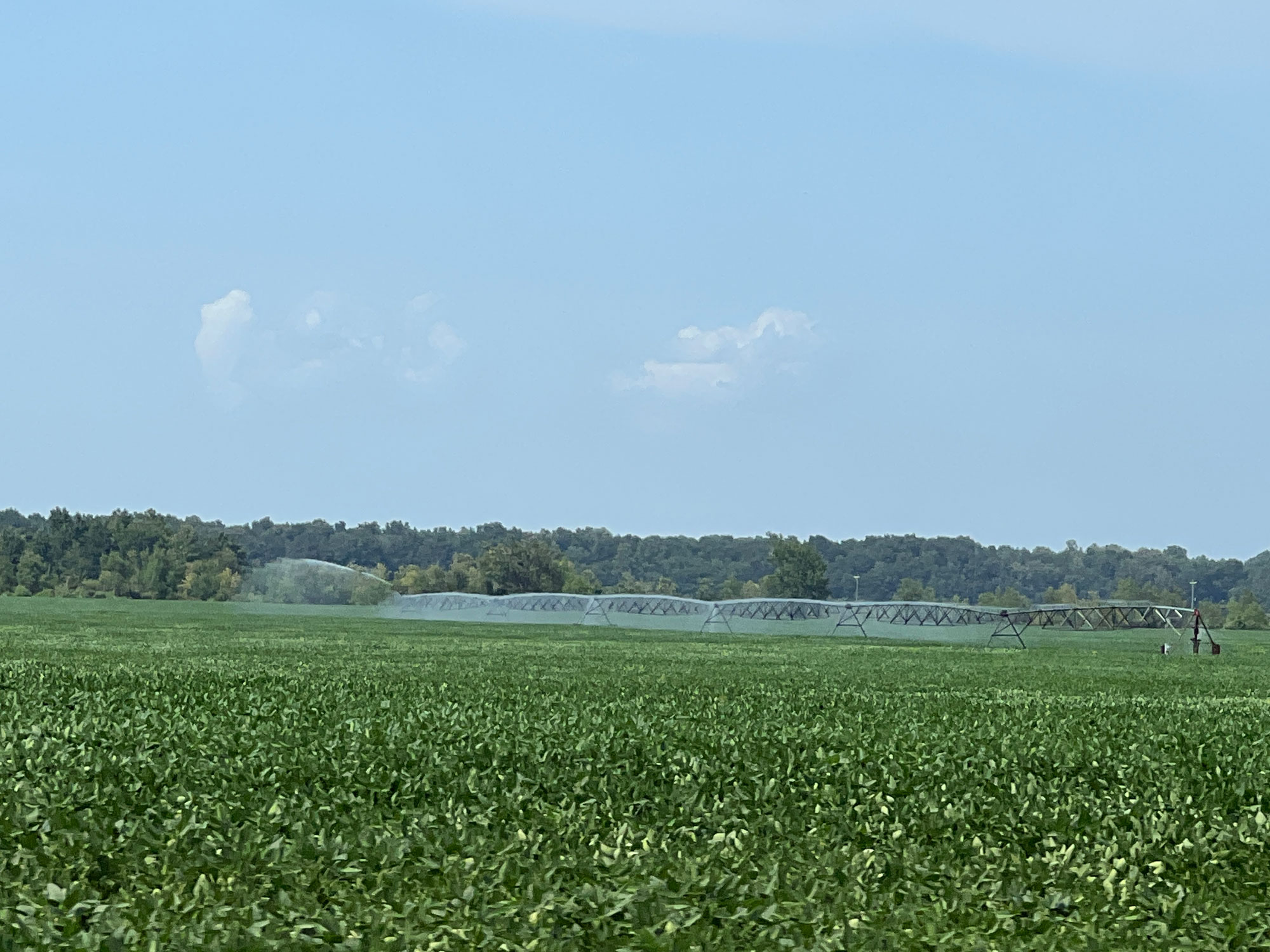Henry: Next 30 days critical for irrigators, crops and equipment
"There are things that farmers can do to mitigate both the human and plant stress being experienced.”
July 25, 2022
By Mary Hightower
U of A System Division of Agriculture
Fast facts
- Chris Henry offers tips for assessing crop water demand, maintaining equipment
- ‘Mitigating Irrigation Fatigue and Drought Stress in 2022’ now available online
- Fact sheet series available online
(480 words)
(Newsrooms: with file art Of irrigation, Chris Henry)
STUTTGART, Ark. — If there’s one message Chris Henry has for Arkansas row crop farmers during the drought, it’s “don’t get in a hurry.”
Henry, professor and water management engineer for the University of Arkansas System Division of Agriculture, has posted a handout with a variety of tactics aimed at helping farmers get the most crop they can with what irrigation is available. Additional information can be found in a fact sheet series on Arkansas crop irrigation.

“The next 30 days will be critical for many irrigators, as fatigues sets in, and many crops are still at or entering high water demand,” Henry said. “However, there are things that farmers can do to mitigate both the human and plant stress being experienced.”
Arkansas has experienced a broken string of days with highs in the triple digits, with rain in short supply. The U.S. Drought monitor map of July 19 showed all of Arkansas experiencing some form of drought. The Climate Prediction Center’s extended outlook issued July 21 showed most of Arkansas with temperatures well above normal. However, the CPC’s precipitation outlook was more promising, with the northern two-thirds of the state possibly seeing above-average amounts.
Henry’s tactics include:
- Using a computerized hole selection program such as Pipe Planner, Rice Irrigation or PHAUCET to help plan water distribution across the field. Henry said use of these programs can reduce pump time by between 10 percent and 50 percent.
- Plan to be patient. Henry said water is drawn down from wells and reservoirs, pumps have to lift water further. “Expect to take longer to irrigate a set or flood up a field and adjust accordingly,” he said. “Some alluvial wells can drop off as much as 50 percent and it’s not uncommon for relifts to fall off 30 percent as we get to the bottom.”
- Soil sensors are still relevant. “It’s not too late to incorporate sensors into irrigation management,” Henry said. “Using sensors to determine the last irrigation of the season is the largest payback of monitoring soil moisture, it almost always saves at least one irrigation and allows for planning ahead of dwindling irrigation supplies.”
Even with one or two sets of sensors — for less than $500 — estimating the number of irrigations left can be done for the entire enterprise. “In a drought year like 2022, sensors can save both water and profitability,” Henry said.
- Irrigate deeply. Instead of flushing fields with limited water, try to fill the profile up when irrigating, Henry said. “This will encourage the roots to go deeper for water and reduce the number of sets for the season-saving on precious labor.”
- Check those pumps. Drought is prompting farmers to run their irrigation pumps beyond the typical 800 hours a year.
“For diesel power units, oil changes and greasing propeller shafts may seem obvious, but changing the oil in the gear head is often overlooked,” Henry said. He also urged farmers with electric motors to be sure to use both the correct lubrication and amount. “If the oil in the sight window is black or white, there is a high risk of bearing failure.”
The fact sheet provides additional guidance, tables and example calculations, on how to estimate crop demand and the amount and number of irrigations needed for reservoirs and wells as supplies draw down.
“Heat stress and heat exhaustion awareness are real threats to safely sustaining irrigation, keep ample water to employees and yourself and don’t get in a hurry, it may take more time to do things safely,” Henry said.
To learn more about Division of Agriculture research, visit the Arkansas Agricultural Experiment Station website: https://aaes.uada.edu. Follow on Twitter at @ArkAgResearch. To learn more about the Division of Agriculture, visit https://uada.edu/. Follow us on Twitter at @AgInArk. To learn about extension programs in Arkansas, contact your local Cooperative Extension Service agent or visit www.uaex.uada.edu.
About the Division of Agriculture
The University of Arkansas System Division of Agriculture’s mission is to strengthen agriculture, communities, and families by connecting trusted research to the adoption of best practices. Through the Agricultural Experiment Station and the Cooperative Extension Service, the Division of Agriculture conducts research and extension work within the nation’s historic land grant education system.
The Division of Agriculture is one of 20 entities within the University of Arkansas System. It has offices in all 75 counties in Arkansas and faculty on five system campuses.
Pursuant to 7 CFR § 15.3, the University of Arkansas System Division of Agriculture offers all its Extension and Research programs and services (including employment) without regard to race, color, sex, national origin, religion, age, disability, marital or veteran status, genetic information, sexual preference, pregnancy or any other legally protected status, and is an equal opportunity institution.
# # #
Media contact: Mary Hightower
Mhightower@uda.edu